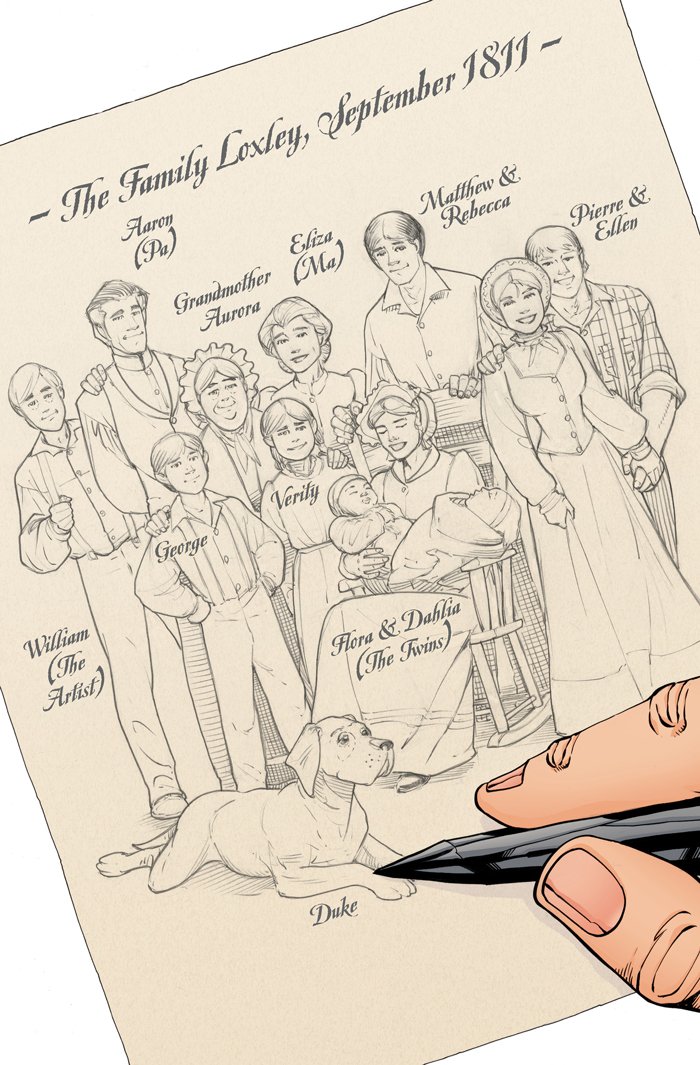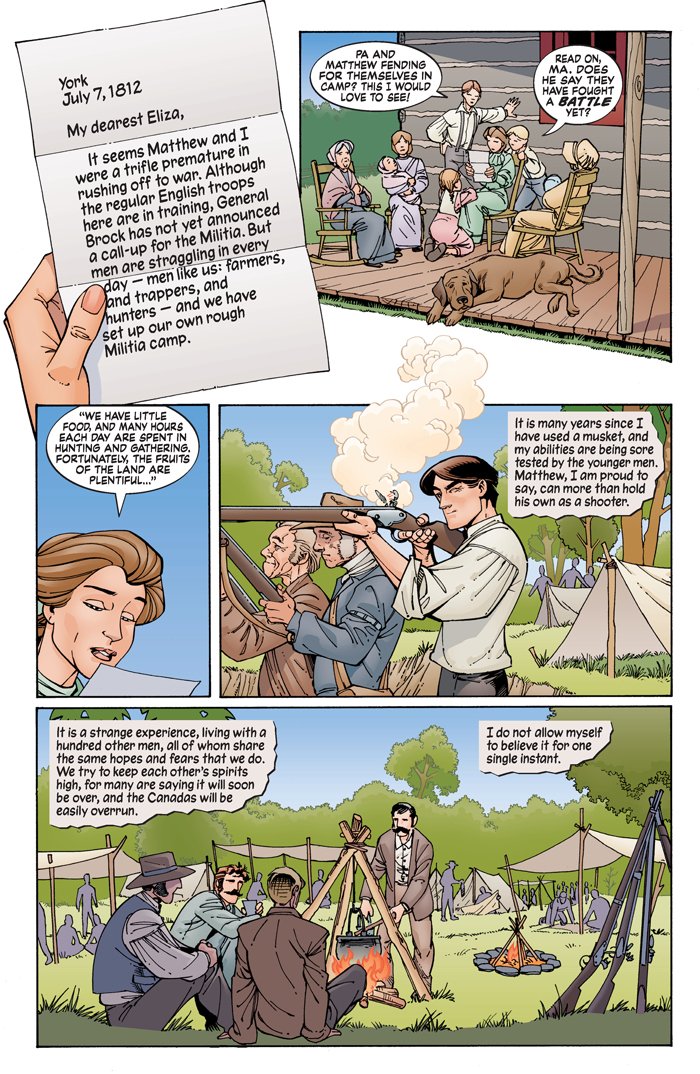
By Robert Kanigher, Jack Miller, Phyllis Reed, Lee Goldsmith, Barbara Friedlander, Julius Schwartz, John Romita, Bernard Sachs, John Rosenberger, Werner Roth, Bill Draut, Mike Sekowsky, Tony Abruzzo, Arthur Peddy, Dick Giordano, Sal Trapani, Jay Scott Pike, Gene Colan, John Giunta, Frank Giacoia & various (DC Comics)
ISBN: 978-1-4012-3438-6 (TPB)
This book includes Discriminatory Content produced in far less enlightened times.
As the escapist popularity of flamboyant superheroes waned after World War II, newer genres such as Romance and Horror came to the fore and older forms regained their audiences. Some, like Westerns and “Funny Animal” comics, had hardly changed at all but Crime and Detective tales were utterly radicalised by the temperament of the times. Stark, uncompromising, cynically ironic novels and socially aware, if not actually culturally nihilistic, movies that would become categorised as Film Noir offered postwar society a bleakly antiheroic worldview that often hit too close to home and set fearful, repressive, middleclass parent groups and political ideologues howling for blood.
Naturally, these new artistic sensibilities seeped into comics, transforming two-fisted gumshoe and Thud-&-Blunder cop strips of yore into darkly beguiling, even frightening tales of seductive dames, big payoffs and glamorous, sympathetically portrayed thugs and brutes. Sensing imminent Armageddon, America’s moral junkyard dogs bayed ever louder as they imagined their precious children’s minds under seditious attack…
Concurrent to the demise of masked mystery-men, industry giants and inveterate pioneers Joe Simon & Jack Kirby famously invented the love genre for comic books, crafting tastefully adult-oriented, beguiling, explosively contemporary social dramas equally focussed on the changing cultural scene and grown up relationships. However, even they began cautiously, with semi-comedic prototype My Date in early 1947 before plunging into the torrid real deal with Young Romance #1 in September of that year.
Not since the invention of Superman has a single comic book generated such a frantic rush of imitation and flagrant cashing-in. It was a monumental hit and the team quickly expanded: releasing spin-offs such as Young Love (February 1949), Young Brides and In Love. Simon & Kirby presaged and ushered-in the first American age of adult comics – not only with their creation of the Romance genre, but with challenging modern stories of real people in extraordinary situations. Sadly, they also saw it all disappear again in less than eight years. Produced for a loose association of companies known as Prize/Crestwood/Pines, their small stable of magazines blossomed and wilted as the industry contracted throughout the 1950s.
All through that turbulent period, comic books suffered impossibly biased oversight and hostile scrutiny from hidebound and panicked old guard institutions such as church groups, media outlets and ambitious opportunistic politicians. A number of tales and titles were cherry-picked and garnered especial notoriety from those social doomsmiths, whilst hopeful celebration and eager anticipation amongst tragic, forward-thinking (if psychologically scarred comics-collecting) victims was quashed when the industry instigated a ferocious Comics Code castrating the creative form just when it most needed boldness and imagination.
We lost and comics endured more than a decade and a half of savagely doctrinaire, self-imposed censorship. Those tales from a simpler, more paranoid time (much like right now), exposed a society in meltdown and suffering cultural PTSD, but are mild by modern standards of behaviour, and the sheer quality of art and writing make those pivotal years a creative highpoint long overdue for a thorough reassessment.
The first Young Love ran for 73 issues (1949-1956) before folding and being relaunched in a far more anodyne, CCA-approved form as All For Love in Spring 1957. Unable to find an iota of its previous and hoped-for audience, it disappeared after 17 issues in March 1959 before resurrecting as Young Love a year later. Starting with #18, the title ran steadily but unremarkably until June 1963 when the experiment and company died with #38. Crestwood sold its remaining landmark, groundbreaking titles and properties – Young Romance, Young Love and Black Magic being the most notable – to National/DC before fading from sight. The new editors released their first edition in the autumn of 1963 as part of their own small, shy, unassuming romance ring: carrying on with it and similar titles targeting teenaged girls (for which, read aspirational, imaginative 8-12 year-olds) for the next 15 years.
In the 1970s a sharp decline in all comic book sales finally killed the genre off. Young Love was one of the last; ending at #126 (cover-date July 1977). This monumental monochrome miscellany gathers DC’s first 18 issues (#39-56) spanning September/October 1963 – July/ August 1966) but, although beautiful to look upon, it is sadly plagued with twin tragedies.
The first is that the stories soon become fearfully formulaic – although flashes of narrative brilliance do crop up with reassuring regularity – whilst the second is an painfully inaccurate listing of creator credits. Many fans have commented and suggested corrections online, and I’m adding my own surmises and deductions about artists whenever I’m reasonably sure, but other than the unmistakable, declamatorily florid flavour of Robert Kanigher, none of us in fandom are that certain just who was responsible for scripting these amatory affairs. However, research continues and sources like Grand Comicbook Database, Lambiek and DC.fandom.com are continually amending history for us. Here, likely anonymous creative contenders include Dorothy Woolfolk, George Kashdan, E. Nelson Bridwell and Morris Waldinger, but I’m afraid we may never really know.
C’est l’amour… et la vie
On these anthological pages, the heartbreak and tears begin with the introduction of a soap-opera serial undoubtedly inspired by romantic antics of television physicians such as Dr. Kildare (1961-1966) and Ben Casey (1962-1966). Written in an uncomfortably macho “me Dr. Tarzan, you Nurse Jane” style by Kanigher and illustrated with staggering beauty by John Romita, ‘The Private Diary of Mary Robin R.N.’ follows the painful journey and regularly recurring heartache of a nurse dedicated to her patients, all whilst fighting her inbuilt need to “settle down” with the man of her dreams, whoever he may be.
It’s usually a big-headed, know-it-all medic with no time to waste on settling anything or anywhere…
The serial opened with 2-part novelette ‘No Cure for Love’, in which a newly-qualified Registered Nurse starts her career in the OR at County General Hospital, instantly arousing the ire of surly surgeon Will Ames whose apparent nastiness is only a mask for his moody man-concern over his poor benighted patients – but never their billables…
However, even as he romances Mary and she dares to dream, the good doctor soon proves that medicine will always be his first and only Love.
I’m not sure of the inker but the pencils on stand-alone back-up ‘You’ve Always Been Nice!’ look like Werner Roth in a novel yarn of modern Texans in love that pretty much sets the tone for the title: Modern Miss gets enamoured of the wrong guy or flashy newcomer until the quiet one who waited for her finally gets motivated. ‘The Eve of His Wedding’ – by Bernard Sachs – goes with the other favourite option: a smug, flashy girl who loses out to the quiet potentially Trad-wife heroine waiting patiently for true love to lead her man back to her…
In #40, Kanigher & Romita ask Mary Robin ‘Which Way, My Heart?’ and she answers by letting Dr. Ames walk all over her before transferring to Paediatrics. She still found time to fall in love with a thankfully adult patient – but only until he got better… Filling out the issue are ‘Someone to Remember’ (illustrated by Bill Draut) which sees sensible Judy utterly transform herself into a sophisticated floozy for a boy who actually prefers the old her, and ‘The Power of Love’ (incorrectly attributed to Don Heck but perhaps Morris Waldinger or John Rosenberger heavily inked by Sachs?) wherein Linda competes with her own sister over new boy Bill.
Although retaining the cover spot, the medical drama was relegated to the end of the comic from #41 on, and complete stories led, starting on ‘End With A Kiss’ (Mike Sekowsky & Sachs), wherein calculating Anna almost marries wrong guy Steve, until good old Neil puts his foot down, whilst for a girl who dates two men at the same time, ‘Heartbreak Came Twice!’ – a tale that was almost a tragedy. Mary Robin then cries – she cried a lot – ‘No Tomorrow for My Heart!’ as Will Ames continues calling when he feels like it as she somehow finds herself competing with best friend Tess for both him and a hunky patient in their care. Mary even briefly quits her job for this man of her dreams…
The always superb John Rosenberger inking himself – mistakenly credited throughout to Jay Scott Pike – opens #42 with ‘Boys are Fools!’ wherein young Phyllis is temporarily eclipsed by her cynical, worldly older sister Jayne; until a decent man shows them the error of their ways. Vile Marty then uses unwitting Linda as a pawn in a battle of romantic rivals for ‘A Deal with Love!’ (Rosenberger or maybe Win Mortimer & Sachs?). I don’t have any corroborating proof, but a custom of the era was for artists to trade pages or anonymously collaborate on some stories; making visual identification a real expert’s game…
With a ‘Fearful Heart!’, Mary Robin closes up the issue by accidentally stealing the love of a blinded patient nursed by her plain associate. When the hunk’s sight returned, he just naturally assumes the pretty one was his devoted carer…
Young Love #43 opened with the excellent ‘Remember Yesterday’ (Tony Abruzzo & Sachs) in which Gloria relives her jilting by fiancé Grant before embarking on a journey of self-discovery and finding her way back to love. Then the Sekowsky/Sachs influenced ‘A Day Like Any Other’ and ‘Before it’s Too Late’ disclose the difficulties of being a working woman and temptations of being left at home all alone…
After that, Kanigher & Romita end the affairs by sharing the childhood days of Mary Robin and just why she turned to nursing when her childhood sweetheart becomes her latest patient in ‘Shadow of Love!’ YL #44 declares ‘It’s You I Love!’ (Abruzzo & Frank Giacoia) as wilful Chris foolishly sets her cap for the college’s biggest hunk, whilst in ‘Unattainable’ Lorna learns she just isn’t that special to playboy Gary before Mary Robin endures ‘Double Heartbreak!’ when her own sister Naomi sweeps in and swoops off with on-again, off-again Dr. Ames.
Sekowsky & Sachs opened #45 with ‘As Long as a Lifetime!’ wherein poor April finds herself torn between and tearing apart best friends Tommy and Jamie, whilst ‘Laugh Today, Weep Tomorrow!’ (Phyllis Reed & Abruzo) has tragic Janet see her best friend Margot‘s seductive allure steal away another man she might have loved. ‘One Kiss for Always’ then shows Mary Robin as the patient after a bus crash costs her the use of her legs. During her battle back to health, and loss of the only man she might be happy with, the melodrama finally achieves the heights it always aspired to in a tale of genuine depth and passion.
Reed & Rosenberger lead in #46 as Maria and Mark conspire together to win back their respective intendeds and discover exactly ‘Where Love Belongs’, after which Mortimer reveals ‘It’s All Over Now’ (Reed & Arthur Peddy) for Merrill who only gets Cliff because Addie went away to finishing school. But then she came back…
This surprisingly mature and sophisticated fable is followed by Kanigher & Romita’s ‘Veil of Silence!’ in which Nurse Robin takes her duties to extraordinary lengths: allowing a patient to take her latest boyfriend in order to aid her full recovery…
YL #47’s ‘Merry Christmas’ (Rosenberger) shows astonishing seasonal spirit as Thea cautiously welcomes back sister Laurie – and gives her a second chance to steal her husband – after which secretary Vicky eavesdrops on her boss and boyfriend: almost finishing her marriage before it begins in ‘Every Beat of his Heart!’ (Reed & Peddy). Mary Robin’s ‘Cry for Love’ starts in another pointless fling with gadabout Ames and ends with her almost stealing another nurse’s man in a disappointingly shallow but action-packed effort, after which – in #48 – ‘Call it a Day’ (Lee Goldsmith & Peddy) finds an entire clan of women united to secure a man for little Alice, before Rosenberger limns ‘Trust Him!’ wherein bitter sister Marta‘s harsh advice to love-sick sibling Jill is happily ignored. Kanigher & Romita then explore Mary Robin’s ‘Two-Sided Heart!’ after Ames again refuses to consider moving beyond their casually intimate relationship. Of course, that shouldn’t excuse what she then does with the gorgeous amnesia patient who has a grieving girlfriend…
Young Love #49 led with Jack Miller & Rosenberger’s ‘Give Me Something to Remember You By!’, with Marge praying her latest summer romance turns into a something more. Waiting is a torment but ‘Your Man is Mine!’ (Goldsmith &Roth) shows what’s worse when sisters clash and Clea again tries taking what Pat has: a fiancé…
‘Someone… Hear my Heart!’ then unselfconsciously dips into the world of TV as Mary Robin dumps Dr. Ames for an actor and new career on a medical show. It doesn’t end well and she’s soon back where she belongs with bedpans and the man who can’t or won’t appreciate her…
Roth – or maybe Sekowsky & Jay Scott Pike – open #50 with ‘Second Hand Love’ as Debbie dreads that the return of vivacious Vicky will lead to her taking back the man she left behind, whilst ‘Come into My Arms!’ (Reed & Frank Bolle) sees Mary Grant visit Paris in search of one man, only to fall for another. Mary Robin then finds herself pulled in many directions as she falls for another doctor and one more hunky patient before yet again rededicating herself to professional care over ‘The Love I Never Held!’ She jumps back to the front in #51, discovering ‘All Men are Children!’ (still Kanigher & Romita) when an unruly shut-in vindictively uses her to make another nurse jealous, after which Miller & Rosenberger delivers a stunning turn with ‘Afraid of Love!’ Here, after years of obsessive yearning, Lois finally goes for it with the man of her dreams. Romita then a took a turn at an stand-alone solo story, limning Miller’s ‘No Easy Lessons in Love’ wherein Gwen and Peter separately travel the world and make many mistakes before finally finding each other again.
The nurse finally got her man – and her marching orders – in #52’s ‘Don’t Let it Stop!’, but dashing intern Dan Swift only makes his move on Mary after being hypnotised! Hopefully, she lived happily ever after because, despite being advertised for the next issue, she didn’t appear again…
The abrupt departure was followed by vintage reprint ‘Wonder Women of History: Mary Kingsbury Simkhovitch’ (by Julius Schwartz & John Giunta from Wonder Woman #55, September/October 1952), detailing the life of a crusading social campaigner before Roth & Sachs detail how a flighty girl stops chasing husky lifeguards and finds a faithful adoring ‘Young Man for Me!’ ‘The Day I Looked Like This!’ (by Dick Giordano & Sal Trapani) celebrates the day tomboy Judi finally starts gussying up like a proper girl and unhappily discovers she is the spitting image of a hot starlet…
Sporting a design makeover, Young Love #53 opens with ‘A Heart Full of Pride!’ (Abruzzo & Romita) as naïve Mib proves to herself that – just like in school – determination and perseverance pay off in romance, before Miller & Peddy show how standoffish Cynthia learns how she needs to play the field to win her man in ‘I Wanted My Share of Love’.
Miller & Romita describe the designs of Kathy, who discovers the pitfalls of her frivolous lifestyle in ‘Everybody Likes Me… but Nobody Loves Me!’ before Draut illustrates Miller’s lead feature for YL #54 as ‘False Love!’ exposes a case of painfully mistaken intentions when a gang of kids all go out with the wrong partners… until bold Nan finally speaks her mind.
Reed, Abruzzo & Sachs’ ‘Love Against Time’ shows schoolteacher Lisa that patience isn’t everything, after which ‘Too Much in Love!’(Miller & Romita) hints at a truly abusive relationship until Mandy‘s rival tells her just why beloved Van acts that way…
‘An Empty Heart!’ (Reed & Peddy) opens #55, revealing how insecure Mindy needs to date other boys just to be sure she can wait for beloved Sam to come back from the army, whilst in ‘Heart-Shy’ (Reed, Jay Scott Pike & Sachs) oblivious Della takes took her own sweet time realising self-effacing Lon is the boy for her, after which Pike limns Miller’s tale of Janie who finally defies her snobbish, controlling mother and picks ‘Someone of My Own to Love’.
The romance dance concludes here with #56 and ‘A Visit to a Lost Love’ (Miller & Gene Colan): a bittersweet winter’s tale of paradise lost and regained, after which perpetually fighting Richy and Cindy realise ‘Believe it or Not… It’s Love’ (Barbara Friedlander, Abruzzo & Sachs), and ‘I’ll Make Him Love Me!’ (Miller & Sachs) show how scary Liz stalks Perry until she falls for her destined soul-mate Bud…
As I’ve stated, the listed credits are full of errors and whilst I’ve corrected those I know to be wrong I’ve also made a few guesses which might be just as wild and egregious (I’m still not unconvinced that many tales were simply rendered by a committee of artists working in desperate jam-sessions), so I can only apologise to all those it concerns, as well as fans who thrive on these details for the less-than-satisfactory job of celebrating the dedicated creators who worked on these all-but-forgotten items.
As for the tales themselves: they’re dated, outlandish and frequently offensive in their treatment of women. So were the times in which they were created, but that’s no excuse.
However, there are many moments of true narrative brilliance to equal the astonishing quality of the artwork here, and by the end of this titanic torrid tome the tone of the turbulent times was definitely beginning to shift as the Swinging part of the Sixties began and hippies, free love, flower power and female emancipation began scaring the pants off the old guard and reactionary traditionalists.
Not for wimps or sissies but certainly an unmissable temptation for all traditionalist romantics and lovers of great comic art…
© 1963, 1964, 1965, 1966, 2012 DC Comics. All Rights Reserved.

































